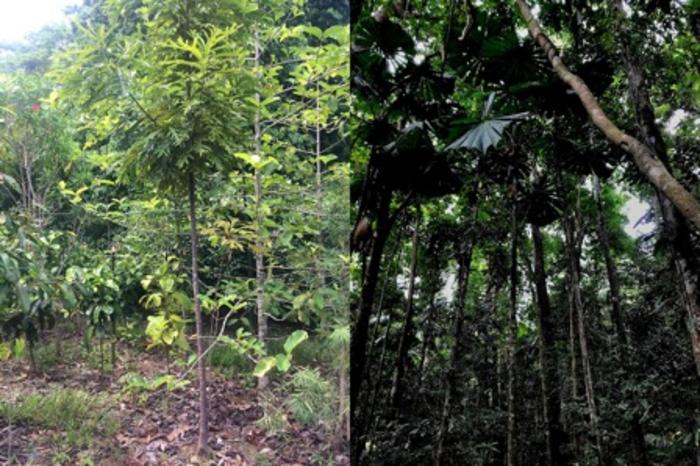When we picture rainforest restoration, we typically envision workers planting diverse tree species across degraded landscapes—but researchers have discovered a crucial missing ingredient that could determine whether these young forests thrive or struggle. A groundbreaking study published May 6 in the Journal of Applied Ecology reveals that termites, often maligned as destructive pests, are recovering much more slowly than expected in replanted rainforests in Australia, potentially hindering forest growth and nutrient cycling in these carefully cultivated ecosystems.
The research, led by scientists from the Cary Institute of Ecosystem Studies, challenges conventional thinking about forest restoration and suggests a surprising solution: deliberately transplanting termites and deadwood from established forests into regenerating ones.
The Hidden Helpers of Healthy Forests
While restoration projects typically focus on planting trees, the study highlights the overlooked role of decomposers like termites and fungi, which break down dead plant matter and recycle essential nutrients back into the soil.
“People tend to think that by just planting a diversity of trees, these rainforests will regenerate,” said Baptiste Wijas, a postdoctoral fellow at Cary Institute and visiting academic at the University of Queensland in Australia. “But it’s worth thinking about, should we actually be putting in other organisms as well, to restore other ecosystem processes that help the forest function? In the context of rainforest regeneration, no one really thinks about it at all.”
The findings come at a critical time when restored forests constitute an increasingly significant portion of the world’s remaining rainforests, with reforestation initiatives gaining momentum as strategies to preserve biodiversity and sequester atmospheric carbon.
Surprising Discovery in Australian Rainforests
The research team, including Cary senior scientist Amy Zanne, conducted their study across three sites in Australia’s tropical north: one old-growth forest in the Daintree Rainforest at the James Cook University Observatory, and two nearby sites that had been replanted 4 and 8 years before the study began. These regenerating sites had originally been rainforest until around 1900, when they were converted to agricultural plantations growing crops like pineapple, banana, and oil palm before being abandoned in the 2000s and later replanted by the nonprofit Rainforest Rescue.
For four years, the scientists monitored wooden blocks placed at all three sites, checking them every six months to assess decomposition rates and the presence of termites and fungi.
The fieldwork was challenging, to say the least. “You’re sweating all the time, and there are plants that want to attack you everywhere,” said Wijas. Zanne added that during one year, the team endured “drought, flooding, fires, temperatures of 113F, and a zombie cyclone that caught us twice. It was an epic, biblical year.”
Key Findings That Upend Previous Assumptions
- Contrary to expectations, fungi proved relatively resilient, functioning similarly in both old-growth and replanted forests (slightly slower in the youngest forest)
- Termites, however, were significantly less effective at decomposing wood in the replanted forests, even 12 years after reforestation
- Lower termite activity may result in slower nutrient cycling and carbon return to the soil, potentially limiting forest growth
- The slower decomposition rates could be related to termite colony size, number, diversity, or maturity in the recovering sites
A Radical Solution: Transplanting Termites
To address this unexpected challenge, the researchers propose a novel approach—deliberately moving deadwood logs from old-growth forests to regenerating ones. These logs could serve as both habitat and food sources for decomposers while introducing diverse microbial and insect communities.
“A young, regenerating forest doesn’t have a lot of deadwood in it,” Zanne explained. “So if you bring in these logs, you’re giving them some food to tide them over while they wait for parts of trees to start falling down.”
The team is even considering something more direct: “We’re also thinking about transplanting termite mounds straight into the forests along with the deadwood, which is something that no one’s really thought about either,” said Wijas.
Both approaches will likely face skepticism from forest managers. “Many people—forest managers included—don’t really like termites,” Wijas acknowledged. “But they play an important role in having a healthy forest.”
Misunderstood Ecosystem Engineers
The researchers emphasize that termites’ reputation as destructive pests is largely undeserved. “Only about 3% of termites are known to damage human homes,” Zanne pointed out, “while very little is known about the other 97%.”
Far from being merely destructive, termites may actually contribute significantly to carbon sequestration. “We think termites might be locking up carbon in their nests,” said Wijas. “When they eat wood, they’re not able to digest all of it, and so the feces they use to build their nests could be quite carbon-rich. They may even lock up more carbon than they emit, but we just don’t know yet.”
Termites also harbor nitrogen-fixing bacteria that provide essential nutrients for tree growth and function, making them valuable allies in forest restoration efforts.
Could the absence of these tiny ecosystem engineers be limiting the success of reforestation projects worldwide? As Zanne puts it: “Termites and fungi are absolutely critical to forest function. It would be interesting to see who else returns to the regenerating forests if the termites are there—perhaps ants, lizards, and gliders that eat termites. Right now we just don’t have any idea whether these organisms are coming back in these systems.”
As reforestation efforts expand globally to combat climate change and biodiversity loss, this research suggests that a truly holistic approach may require thinking smaller—much smaller—than we ever imagined. The future of our regenerating rainforests might just depend on giving termites a helping hand.
If our reporting has informed or inspired you, please consider making a donation. Every contribution, no matter the size, empowers us to continue delivering accurate, engaging, and trustworthy science and medical news. Independent journalism requires time, effort, and resources—your support ensures we can keep uncovering the stories that matter most to you.
Join us in making knowledge accessible and impactful. Thank you for standing with us!

